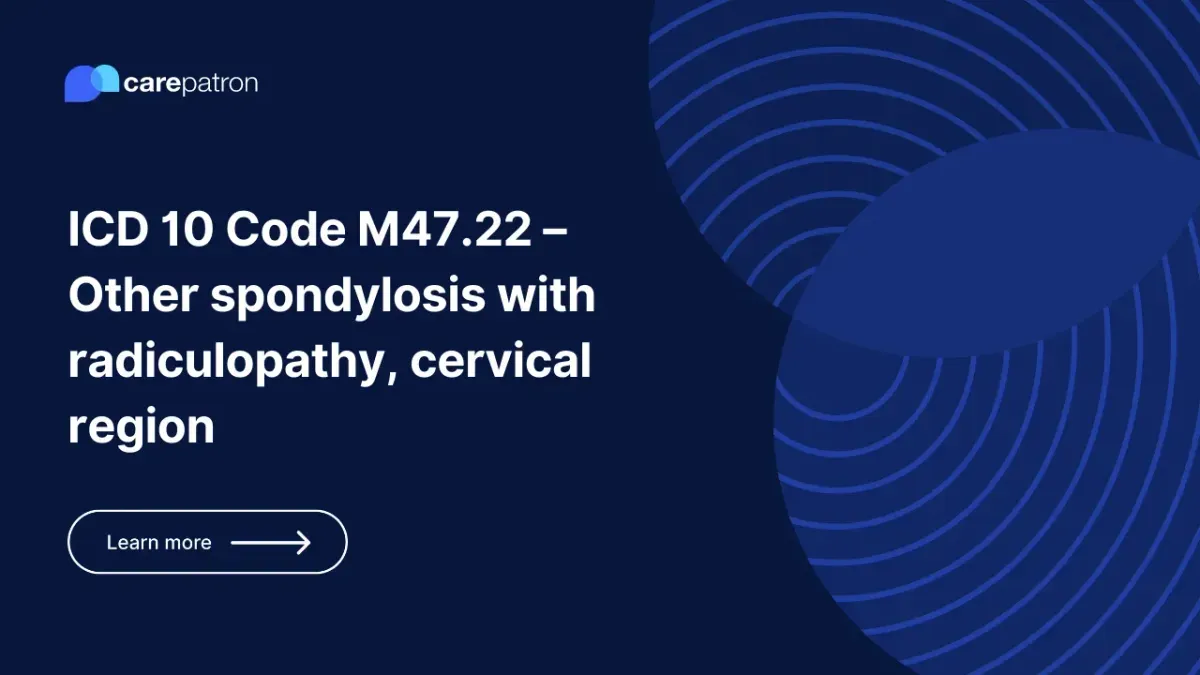
M47.22 – Other spondylosis with radiculopathy, cervical region
The ICD-10-CM code M47.22 is for diagnosing a patient with other spondylosis with radiculopathy in the cervical region of their spine. Learn what this code entails, from its clinical information, if it’s billable or not, FAQs, and even related ICD-10 codes by reading this short guide.
Use Code
Commonly asked questions
Yes, this ICD-10 code is billable.
If all tests confirm that the patient has spondylosis and radiculopathy in the cervical spine region.
Rest, medication (pain relievers, anti-inflammation, muscle relaxants), regular exercise, and physical therapy.
EHR and practice management software
Get started for free
*No credit card required
Free
$0/usd
Unlimited clients
Telehealth
1GB of storage
Client portal text
Automated billing and online payments
